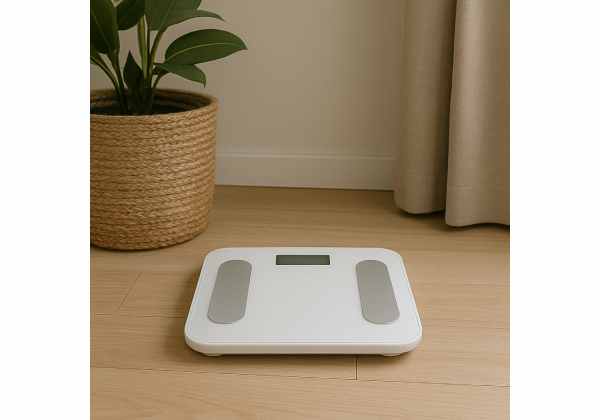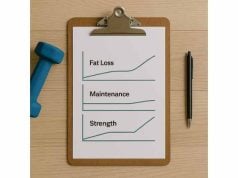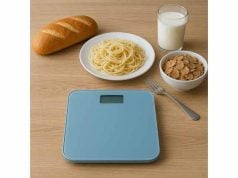
When the scale stops moving, it is tempting to slash more calories or add punishing workouts. Often, that is the wrong move. Many “stalls” are not plateaus at all—they are normal noise from water, glycogen, sodium, and routine changes. This guide gives you a clear, two-to-four-week process to confirm whether you are in a true weight loss plateau and what to do next. You will learn exactly how to weigh, which metrics matter, and how to separate fat loss from fluctuations. If you want a broader troubleshooting framework while you work through this process, keep our concise plateau troubleshooting guide handy.
Table of Contents
- What counts as a weight loss plateau
- Confirm a plateau in 2–4 weeks
- Water, glycogen and sodium swings
- Hidden calorie errors to fix
- Movement and NEAT drops
- Hormones, medications and other blockers
- Decide your next move
- Frequently Asked Questions
What counts as a weight loss plateau
A true plateau is not a few flat days on the scale. It is a flat trend in weight and waist over two to four weeks while you are following a consistent plan. Defining it precisely protects you from overreacting to normal fluctuations and making changes that backfire.
A working definition
- Timeframe: 14–28 days with no meaningful downward movement in the 7-day average weight.
- Confirming metric: Waist circumference at the navel measured once weekly on waking stays within 0–0.5 cm change.
- Behavioral consistency: Calories, protein, steps, and training have been steady—no major deviations from your plan.
Expected rate of loss vs. reality
- With a reasonable deficit, most people lose 0.5–1.0% of body weight per week if they have more to lose, or 0.25–0.75% when leaner. Real weeks include restaurant meals, menstrual cycles, travel, and salt swings that mask loss for days at a time. Look for the trend, not the spiky day-to-day line.
Why this matters
- If you change tactics too quickly, you will chase noise, erode training, and slip into a chronic deficit that is hard to sustain.
- If you wait too long, you can stall for months. A two-to-four-week window balances patience with action.
Common misreads as “plateaus”
- Weekend sodium spikes: Friday and Saturday add water; the scale looks high until Tuesday.
- New training stress: A harder block means more muscle soreness and temporary water retention.
- Poor sleep: One or two short nights can raise weight via fluid shifts and higher evening snacking.
- Cycle phases: In menstruating lifters, late luteal phase bloating can mask true loss for 5–7 days.
Before you proceed
Confirm that your intake and activity basics are set. If you need a quick refresher on energy balance, protein targets, and daily steps, skim our concise weight loss basics so you are not testing a moving target.
Key takeaway: A true plateau is a flat 7-day average and waist over 2–4 weeks with consistent habits. Anything less is likely noise—investigate before you cut more.
Confirm a plateau in 2–4 weeks
Use this structured, two-step verification protocol. It removes guesswork and shows whether you are stuck or still progressing under the noise.
Step 1 — Standardize your data (Week 1–2)
- Daily weigh-ins, same conditions. Weigh after waking, after the bathroom, before eating, with the same scale and minimal clothing. Log the number daily and calculate a 7-day average.
- Waist circumference. Measure at the navel once weekly on waking, before food and fluids. Keep the tape level and snug, not tight.
- Food accuracy. Log everything you eat and drink for the next 14 days, including cooking oils, bites, and beverages. Use gram weights for at-home meals; for restaurants, log best estimates with portion notes.
- Steps and training. Track daily steps and planned workouts. Note any changes (long drives, illness, soreness).
- Sleep notes. Record bedtime and wake time; flag poor nights. Sleep affects appetite, water retention, and training output.
Step 2 — Audit and adjust “noise inputs” (Days 1–14)
- Sodium timing: Keep high-sodium meals away from your weekly measurement day.
- Alcohol: Cap at 0–4 drinks/week, avoid back-to-back nights, and stop drinking 3–4 hours before bed.
- Carb swings: Keep daily carbohydrates within a consistent range on training and rest days to limit glycogen water shifts.
- Cycle tracking: If applicable, align comparisons to the same phase month to month.
Decision at Day 14
- Trend down? (7-day average and/or waist lower) → not a plateau. Keep going.
- Trend flat? → extend the protocol one to two more weeks, tightening logging accuracy and step consistency.
- Trend up? → confirm logging and movement first; do not slash calories yet.
If you need a simple weigh-in method you can follow long term, borrow the practical rules from our daily weigh-in protocol and stick with it through the whole 2–4-week window.
Key takeaway: Standardize inputs, measure daily, and judge the 7-day average plus waist after 14–28 days. Only then decide whether you are truly stalled.
Water, glycogen and sodium swings
Most “mystery” stalls are water, not fat. Understanding why the scale bounces will save you from unnecessary changes.
Glycogen and water
- Carbs store with water. Roughly 3 grams of water travel with each gram of glycogen. Higher-carb days—even when calories match—can push the scale up for 24–72 hours.
- New training stress. Soreness pulls water into muscle for repair. A new program or extra volume can temporarily raise weight even as you lose fat.
Sodium and fluid balance
- Restaurant meals and takeout carry more sodium than home cooking. Higher sodium leads to short-term water retention, masking fat loss until your kidneys balance fluid.
- Time of week effects. Many people see Mon–Wed drops as weekend sodium clears, then a Fri bump from pre-weekend meals. That pattern is normal; judge the weekly average.
Alcohol and sleep
- Alcohol fragments sleep and shifts appetite the next day, often leading to more sodium and carbs. Late nights also raise evening snack calories. Even two drinks can show up as a 1–2 day scale bump.
Cycle-related shifts
- In menstruating lifters, late luteal phase fluid retention can add 0.5–2.0 kg temporarily. Compare the same cycle phase month to month rather than week to week.
How to see through the noise
- Use daily weigh-ins and a 7-day average. Never judge single days.
- Pair weight with waist. If the average is flat but the waist trends down, fat loss is occurring.
- Annotate your log. Mark salty meals, alcohol, poor sleep, and new training stress. Patterns become obvious.
For a deeper primer on why the scale stalls even when fat loss continues, skim our short guide to water and glycogen explained and keep your focus on the trend, not the spikes.
Key takeaway: Glycogen, sodium, alcohol, sleep, and cycle phases create short-term noise. Expect the bounces; judge progress with averages plus waist.
Hidden calorie errors to fix
If your trend is flat after two weeks, check for hidden energy creeping into your week. Small, repeat errors can erase a modest deficit.
Common under-logging mistakes
- Cooking fats. A “splash” of olive oil can add 100–150 calories; log it or switch to a measured spray.
- Bites and licks. Nibbles while cooking, a spoon of peanut butter, or a few fries can add 100–300 calories in a day.
- Drinks. Lattes, creamers, and alcohol often go uncounted; track them precisely.
- Restaurant portions. Entrees are larger than you think. Log a 1.3–1.5× portion unless the menu provides grams or you can weigh components.
Portion creep at home
- Cereal, granola, nuts are energy dense; measure with a scale for two weeks.
- Protein estimates. Raw vs. cooked weights differ; standardize your method so 150 g means 150 g the same way every time.
Weekend effect
- Accurate Mon–Thu, relaxed Fri–Sun is a classic pattern. Two social meals and drinks can wipe out a 3,500–4,000-calorie weekly deficit.
- Fix: plan indulgences, limit alcohol, and keep anchors (protein, steps, bedtime). If weekends are your weak spot, review ideas in our concise plateau checklist and pick two fixes to try this week.
Accuracy practice (7 days)
- Weigh at least one component of each meal (protein or starch).
- Log cooking oils and sauces by gram or teaspoon.
- Choose either dessert or alcohol on social nights, not both.
- Keep a 2-minute log right after each meal; do not try to “remember later.”
When you eat out
- Skim the menu ahead of time and choose a protein-anchored meal.
- Request sauces on the side; shoot for half the sauce.
- Stop at 80% full; leave a few bites if portions are big.
Key takeaway: A few 100-calorie errors repeated daily will stall a modest deficit. Measure the big rocks, plan weekends, and your trend will move again.
Movement and NEAT drops
When you diet, your body subtly moves less. This NEAT (non-exercise activity thermogenesis) drop can erase the very deficit you created.
What NEAT includes
- Steps, fidgeting, posture changes, household chores, short walks, taking stairs, and all off-gym movement. NEAT varies wildly between people and day to day, which is why a fixed calorie target sometimes stops working without any change in food.
How deficits lower NEAT
- Lower energy intake and higher fatigue reduce spontaneous movement. You may still hit the gym, but sit more the rest of the day. Even 1,500–2,500 fewer steps can cancel a 100–150-calorie deficit.
How to protect NEAT during the 2–4-week test
- Set a realistic step floor. Choose a number you can repeat on busy days (e.g., 7–9k). Do not double your steps overnight; consistency beats spikes.
- Anchor movement to triggers. Five to ten minutes after meals, a short walk after calls, stairs instead of elevators for one flight.
- Track with intent. Note step dips on late work nights, travel days, or after hard gym sessions. Plan “make-up” walks before bedtime.
Cardio and strength balance
- Keep low-fatigue cardio (easy cycling, brisk walking) for health and recovery. Avoid turning every session into a sweat-fest that trashes strength work and increases hunger.
- In a cut, reduce lifting volume slightly and keep intensity (load) where you can. Maintain performance, do not chase high fatigue.
For a practical set of ways to keep daily movement up without living on a treadmill, scan our guide to daily movement during dieting and pick two tactics you can sustain this month.
Key takeaway: A small NEAT drop can stall fat loss. Protect steps and easy movement every day, not just gym days.
Hormones, medications and other blockers
Sometimes the issue is not logging or steps. Medical factors, life stress, and recovery can meaningfully slow fat loss—or make the scale look stuck when fat loss continues.
Medications that commonly affect weight
- Antidepressants, antipsychotics, mood stabilizers, certain anticonvulsants, and some diabetes medications can increase appetite, change water handling, or alter energy use.
- What to do: Do not stop or change any medication without your clinician. Discuss options, side-effects, timing, and strategies to manage appetite and sleep. For a quick primer on common culprits to raise with your provider, review our overview of medication-related stalls.
Menstrual cycle and midlife
- Cycle phases: As noted, late luteal phase bloating can mask loss. Use same-phase comparisons month to month.
- Perimenopause: Sleep fragmentation, hot flashes, and cycle irregularity can increase hunger and reduce training output. Emphasize recovery and protein; use smaller deficits with longer time horizons.
Stress and sleep debt
- High stress and short sleep increase hunger, lower restraint, and reduce NEAT. Fragmented sleep also increases water retention, hiding fat loss for a few days.
- Protect a regular bedtime, reduce late screens, and keep caffeine earlier in the day.
Alcohol and late-night eating
- Alcohol lowers restraint and fragments sleep; late-night snacks add calories and sodium. Cap occasions, keep drinks away from bedtime, and anchor meals with protein first.
Medical conditions to rule out
- Thyroid issues, fluid-retaining conditions, and other health concerns can present as stalls. If weight has been flat for months despite consistent behaviors, speak with your clinician for appropriate labs and evaluation.
Key takeaway: When progress looks off despite accurate tracking and steady movement, check sleep, stress, cycle phase, and medications. Some blockers need a lifestyle tweak; others need a clinician’s input.
Decide your next move
After 2–4 weeks of standardized tracking, you have enough data to act. Use these if/then rules to avoid guessing.
If the 7-day average and waist are trending down
→ You are not in a plateau. Do not cut more. Keep the plan steady. Consider a diet break (7–14 days at maintenance) only if fatigue is high or training quality is slipping.
If weight is flat but waist is down
→ You are likely losing fat while water and glycogen mask the scale. Stay the course another 2–3 weeks. If you crave reassurance, compare photos or clothes fit; most people see visible changes here.
If both weight and waist are flat for 3–4 weeks
→ Confirm logging and movement first. Then choose one change:
- Reduce daily calories by 100–150 (usually from carb or fat), or
- Add 1,500–2,000 steps/day on average, or
- Trim one set from each major lift to improve recovery and sleep.
Re-evaluate after 14 days using the same weigh-in and waist protocol.
If training is eroding and cravings are high
→ Shorten the cut. Move to maintenance for 4–6 weeks. Protect sleep, rebuild training quality, and decide on the next small cut when energy returns.
If life gets busy (travel, exams, holidays)
→ Shift to maintenance on purpose. Keep anchors: protein each meal, steps, and a consistent bedtime. A controlled maintenance phase beats a chaotic, half-deficit that frustrates you.
If nothing changes after careful adjustments
→ Bring your notes to your clinician, especially if medications or health conditions are in play. Consider a smaller deficit over a longer horizon with an emphasis on recovery, or explore alternative goals (strength, performance) for a season.
Key takeaway: Act on trends and thresholds, not feelings. Small, planned adjustments beat big swings—and keep your progress durable.
Frequently Asked Questions
How long should I wait before calling it a plateau?
Give it two to four weeks with standardized weigh-ins, steady steps, and accurate logging. A true plateau means your 7-day average and waist are both flat over that window. Shorter spans often reflect water, sodium, sleep, or training-related fluctuations—not stalled fat loss.
What is a normal weekly rate of loss?
Aim for 0.5–1.0% of body weight per week when you have more to lose, or 0.25–0.75% if you are leaner. Faster loss can work for brief periods but often harms training, sleep, and adherence. Judge progress using a 7-day average and waist changes, not single-day weights.
Should I lower calories or increase steps first?
Start with the least invasive change you can sustain. For most, add 1,500–2,000 steps/day or remove 100–150 calories. Hold that change for 14 days before reassessing. If training or sleep is suffering, prioritize recovery and movement before cutting food further.
Can I be losing fat if the scale is flat?
Yes. Water, glycogen, and sodium can hide loss for several days. If your waist circumference trends down while weight is flat, you are likely leaning out. Stick with the plan another two to three weeks and compare photos or clothes fit for confirmation.
How do weekends affect plateaus?
Unplanned calories from restaurant meals and alcohol can erase a weekly deficit. Two social dinners and a few drinks may add 1,000–2,000 calories. Plan ahead, anchor meals with protein, cap drinks, and keep steps high. Judge your weekly average, not Monday’s rebound.
What if medications or hormones are involved?
Do not change prescriptions without medical guidance. Some medications and life stages influence appetite, water handling, or energy. Track carefully, emphasize sleep and protein, and talk with your clinician about options. A smaller, longer deficit with strong recovery often works better here.
References
- Hydration, Hyperthermia, Glycogen, and Recovery: Crucial Factors in Exercise Performance—A Systematic Review and Meta-Analysis 2023 (Systematic Review & Meta-analysis)
- Non-Exercise Activity Thermogenesis in Human Energy Homeostasis – Endotext – NCBI Bookshelf 2022 (Review)
- Effects of Self-Weighing During Weight Loss Treatment: A 6-Month Randomized Controlled Trial 2020 (RCT)
- Achieving an Optimal Fat Loss Phase in Resistance-Trained Athletes: A Narrative Review 2021 (Narrative Review)
- Pharmacotherapy causing weight gain and metabolic alteration in those with obesity and obesity-related conditions: a review 2024 (Review)
Disclaimer
This article provides general education on weight management, nutrition, and training. It is not medical advice and does not replace consultation with a qualified healthcare professional. If you have medical conditions, take prescription medications, are pregnant or breastfeeding, or have a history of disordered eating, seek personalized guidance before making changes.
Share and follow
If this 2–4-week plateau process helped, consider sharing it with someone who is stuck and needs clear next steps. For practical updates and new guides, you are welcome to follow us on the platforms you prefer—Facebook, X, Instagram, or LinkedIn.










